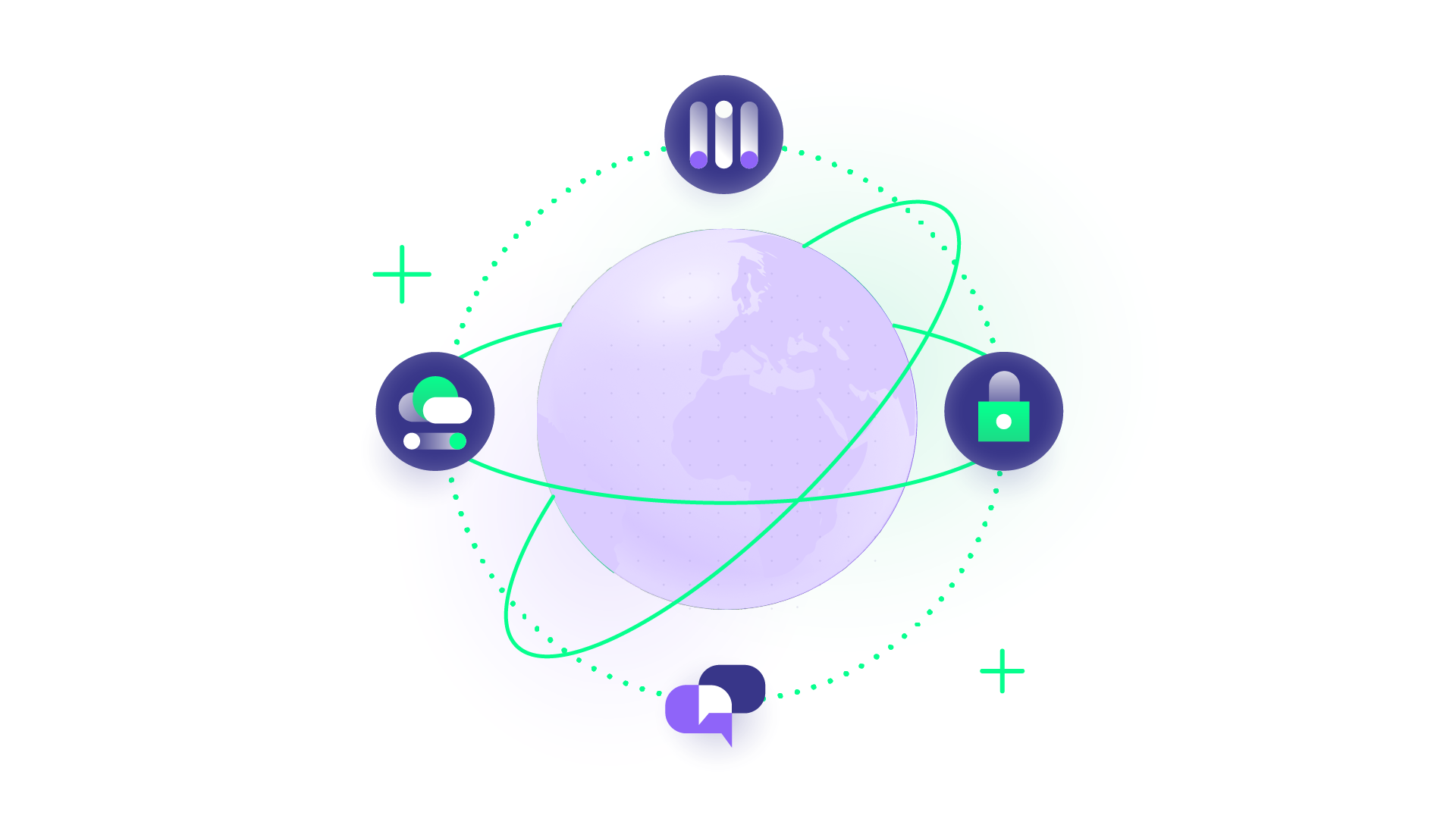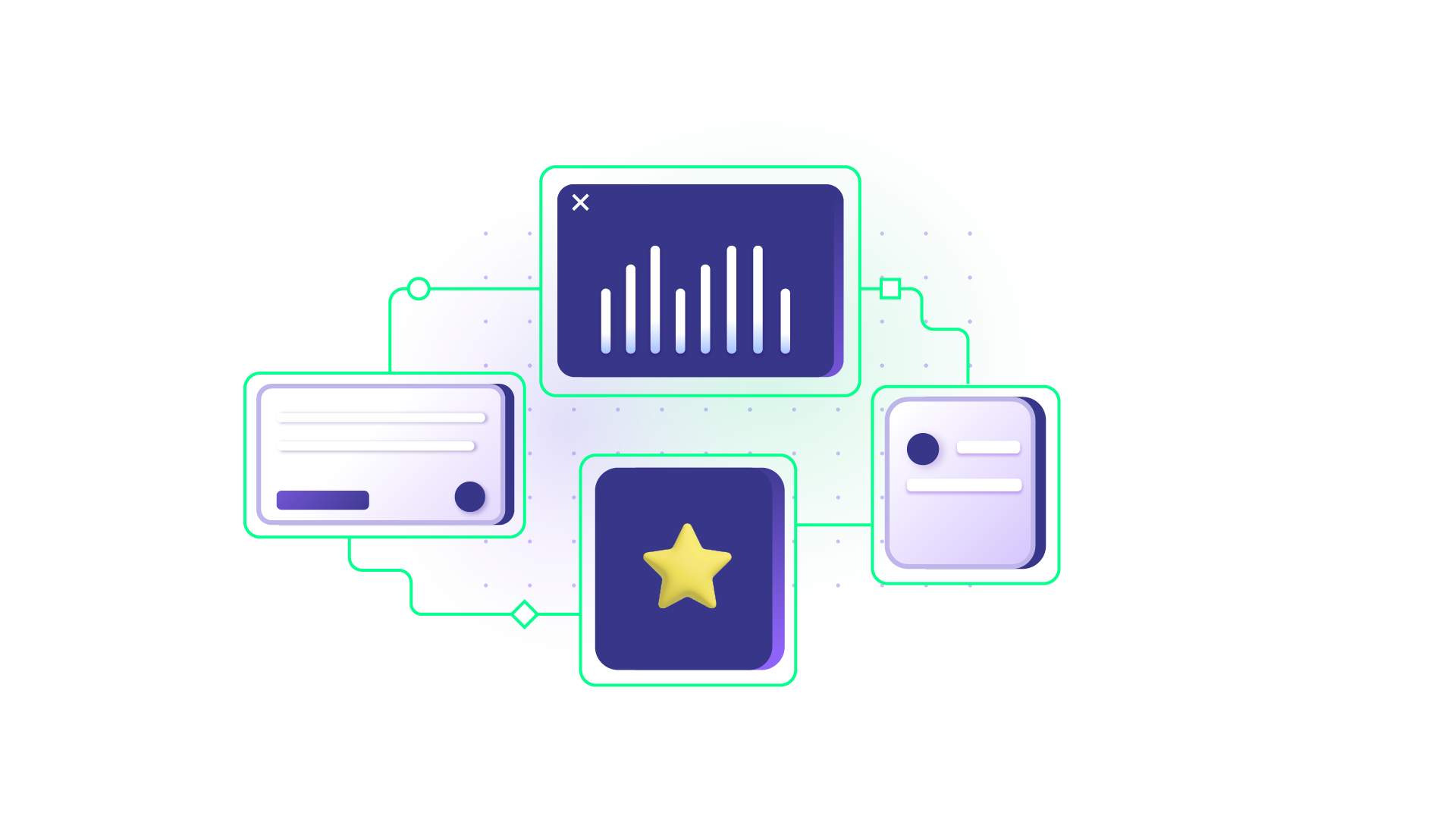Syncing information between internal teams and support staff will increase the resolution speed and enhance customer satisfaction.
With a customizable help desk integration, organizations and customer service teams can collect and collate data from multiple sources to improve predictions and decision-making.
So, how can you integrate help desk platforms without compromising security?
In this article, I’ll show you how. You’ll also learn the benefits and best practices of help desk integration.
What is Help Desk Integration?
Help desk integration is the process of connecting the APIs of two or more help desk software in order to extract, transit, and share information in any desired direction.
This process usually involves writing webhooks to interact with the API and track payloads back and forth. Essentially, you need to understand how the API of every system works in order to write the fitting script for it.

Since building an IT help desk integration requires painstaking coding and coffee-induced debugging, companies are now looking for third-party integration solutions to connect help desk systems seamlessly.
How Does a Service Desk Differ From a Help Desk?
Help desks and service desks are similar because they help service teams. But when you drill down to their core functionality, service desks differ from help desks.
In the traditional sense, help desks focus on consumer concerns. This is the first point of contact for end users seeking assistance with a product or service.
Help desks offer lower-level support, self-service options, and direct communication channels. Conversely, service desks encompass everything offered by help desks while extending to the organization’s IT service management (ITSM) fabric.
Yes, the difference is subtle since most help desk platforms now provide service management as well.
Some help desk solutions that fit this bill include Zendesk, ServiceNow, FreshDesk, and Salesforce Service Cloud.
Why Do You Need To Integrate Help Desks?
Now, let’s discuss the intricate details of why every organization should integrate help desks internally and externally.

- Improve cross-team collaboration: Teams using different help desk software can work better together if they have access to all customer complaints and incidents. This will help them become more productive by avoiding double reporting, ticket replication, and extensive backlogs.
- Break down information silos: Help desk integration provides a unified view of all information regarding any product or service. This helps dismantle information silos between teams working on the same issue. For cross-company collaborations, this ability to share information seamlessly will lead to transparency and trust.
- Satisfy customers better: When your help desk agents can see all the data regarding customer concerns, they’ll have a better understanding of how to fix them. This will lead to faster resolution times and accurate provisioning, which improves customer satisfaction.
- Reduce expenses: Integrating help desk solutions bidirectionally allows your organization to enjoy the benefits of both platforms. For instance, you can collaborate with another MSP that uses ServiceNow without having to pay for the service. With their permission, you can extract data from the field you want.
- Exchange information securely: Help desk integration solutions come with security tools that protect data in transit. Some of these safety measures include personal access tokens, role-based access, user permissions, and multi-factor authentication. As opposed to the exposure risk associated with manually transferring data, your admins can share sensitive business information with MSPs and other teams without worrying about information security.
- Predict problems faster: Integration solutions for help desks usually come with analytical tools for measuring the performance of customer service efforts. With access to data from multiple sources, aided by the power of AI, your organization will be able to predict user concerns based on trends and historical data.
Use Cases For Help Desk Integration
You can integrate help desks for different scenarios. Let’s go through some of them.

- Connect customer service agents in one company to their counterparts in another organization. One implementation scenario is in Zendesk ServiceNow integration.
- Use Jira help desk integration to connect Jira teams and customer service agents. A cybersecurity MSP (NVISO) integrated their ITSM with clients using a tool called Exalate.
- Create a deep-level help desk with ServiceNow integration. WirelessCar also uses Exalate to streamline collaborations with other automotive brands.
- DPG Media implemented a help desk with Jira integration. This helped them migrate data from Zendesk customer care tickets to their in-house Jira issues.
- Sync the details of a service level agreement (SLA) from a Zendesk ticket to a Jira issue using data extracted from custom fields.
- Merge contact information from Salesforce to the corresponding user in Zendesk in order to replicate account details across both instances.
- Use a bidirectional help desk Jira integration to consolidate data from multiple Zendesk tickets to one Jira issue.
Best Practices For Successful Help Desk Integration
To ensure your help desk solutions are integrated properly, you need to follow certain tips and guidelines.
Track Key Metrics
With a better view of data coming in from all the help desks, you can use analytical tools to monitor performance metrics such as:
- API limits
- Uptime
- Downtime
- Ticket volume
- Resolution speed
- Response time
- Open/Closed tickets
- First contact resolution
- Backlogs and predicted backlogs
- Customer satisfaction score
- Agent performance
- Transfer rate
You should also use more native analytical tools to gather insights in order to improve the resolution speed and overall customer experience.
Use Automat(ion)ed Responses
Several help desk incidents are often minor issues that end-users can solve on their own if given proper guidance. That’s why you need help desk live chat integration to incorporate automated responses as part of the self-service portal.
Use Secure and Compliant Solutions
Ensure the third-party integration solution you choose is compliant with regulations, whether GDPR, SOC II, PCI DSS, or other industry-specific compliance standards.

Always check for multiple security features, including API access tokens, personal access tokens, HTTPS, passwords, single tenancy, authentication protocols, and the very best integration security measures.
Choose a Scalable Solution
As your team expands, you want a help desk software integration that can handle the increasing workload without compromising performance.
You need a solution that can handle ticket surges without breaking down and suffering multiple network outages.
Prioritize Customization
Choose a help desk system integration that you can customize with scripts and automated triggers. This will give you plenty of autonomy and wiggle room to explore more integration use cases instead of shoehorning yourself into limited default connections.
Train your Team
Before implementing a help desk synchronization tool, make sure your team understands how it works. Consult your admins to determine if they can customize the scripts and debug faulty connections.

If not, you must train them to maintain and troubleshoot the integration without relying on external support staff.
Exalate: A Reliable Help Desk Integration
Exalate is a help desk integration solution that allows you to connect multiple portals in order to share information seamlessly and in possible real time.
Companies of all stripes rely on Exalate to establish a seamless integration experience between internal teams and external clients.
The main distinguishing factor is that Exalate allows single-tenancy, which means that only the admin in charge of your instance can control the outgoing and incoming data. This is pivotal for integration security.
Want to find out more about Exalate? Check out the online academy. To talk to an integration engineer, book a demo.
Recommended Reading:
- Integration Outsourcing is The Future: Here is Why You Need It
- Exploring the Working Principles of Service Desk Integration
- How to Get the Most out of Your Workflow Integration
- MSP Integration: Why It Matters for Your Business
- Exploring Ways To Implement Managed Services Integration
- ITSM Integration: Simplify Your IT Services Like Never Before




